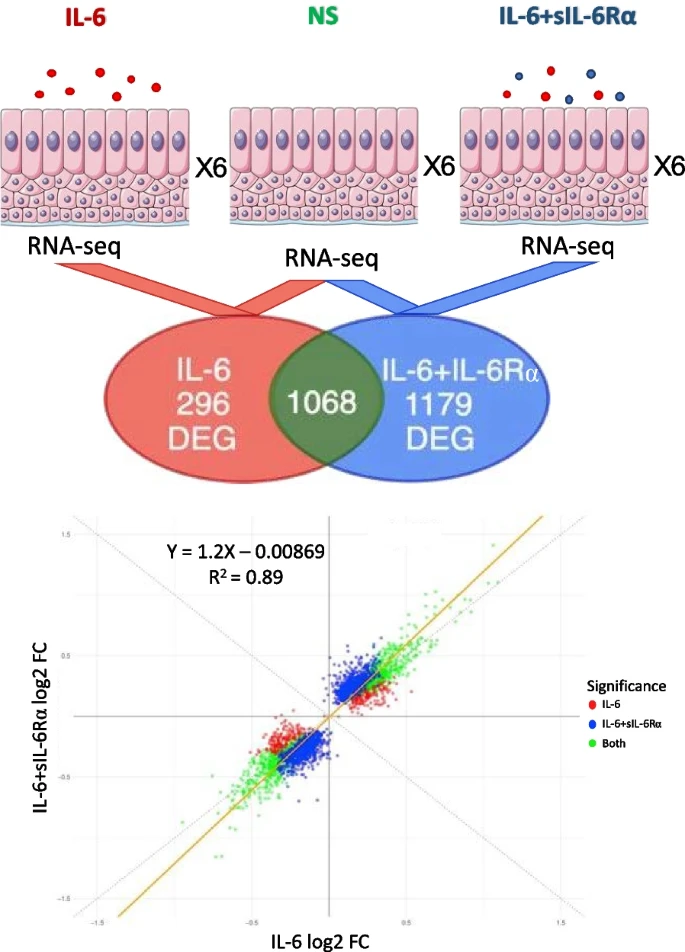
El-Husseini, Z.W., Khalenkow, D., Lan, A. et al. Respir Res 24, 308 (2023). https://doi.org/10.1186/s12931-023-02617-w
Abstract
Background
Asthma is stratified into type 2-high and type 2-low inflammatory phenotypes. Limited success has been achieved in developing drugs that target type 2-low inflammation. Previous studies have linked IL-6 signaling to severe asthma. IL-6 cooperates with soluble-IL-6Rα to activate cell signaling in airway epithelium.
Objective
We sought to study the role of sIL-6Rα amplified IL-6 signaling in airway epithelium and to develop an IL-6+ sIL-6Rα gene signature that may be used to select asthma patients who potentially respond to anti-IL-6 therapy.
Methods
Human airway epithelial cells were stimulated with combinations of IL-6, sIL-6Rα, and inhibitors, sgp130 (Olamkicept), and anti-IL-6R (Tocilizumab), to assess effects on pathway activation, epithelial barrier integrity, and gene expression. A gene signature was generated to identify IL-6 high patients using bronchial biopsies and nasal brushes.
Results

Soluble-IL-6Rα amplified the activation of the IL-6 pathway, shown by the increase of STAT3 phosphorylation and stronger gene induction in airway epithelial cells compared to IL-6 alone. Olamkicept and Tocilizumab inhibited the effect of IL-6 + sIL-6Rα on gene expression. We developed an IL-6 + sIL-6Rα gene signature and observed enrichment of this signature in bronchial biopsies but not nasal brushes from asthma patients compared to healthy controls. An IL-6 + sIL-6Rα gene signature score was associated with lower levels of sputum eosinophils in asthma.
Conclusion
sIL-6Rα amplifies IL-6 signaling in bronchial epithelial cells. Higher local airway IL-6 + sIL-6Rα signaling is observed in asthma patients with low sputum eosinophils.
